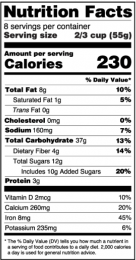
A novel coronavirus is a new coronavirus that has not been previously identified. The virus causing coronavirus disease 2019 (COVID-19), is not the same as the coronaviruses that commonly circulate among humans and cause mild illness, like the common cold.
Can a person become sick with COVD-19 from food? According to the Centers for Disease Control and Prevention “We are not aware of any reports at this time of human illnesses that suggest COVID-19 can be transmitted by food or food packaging. However, it is always important to follow good hygiene practices (i.e., wash hands and surfaces often, separate raw meat from other foods, cook to the right temperature, and refrigerate foods promptly) when handling or preparing foods.”
Handwashing is important in every day life. This includes:
- Food preparation and eating
- Caring for someone who is sick
- After using the bathroom or changing a diaper
- After blowing your nose, coughing or sneezing
- Touching animals, pet waste, pet food
- After handling garbage.
Hand sanitizers can be effective, but not if your hands are visibly dirty. Learn more at www.cdc.gov/handwashing/.







